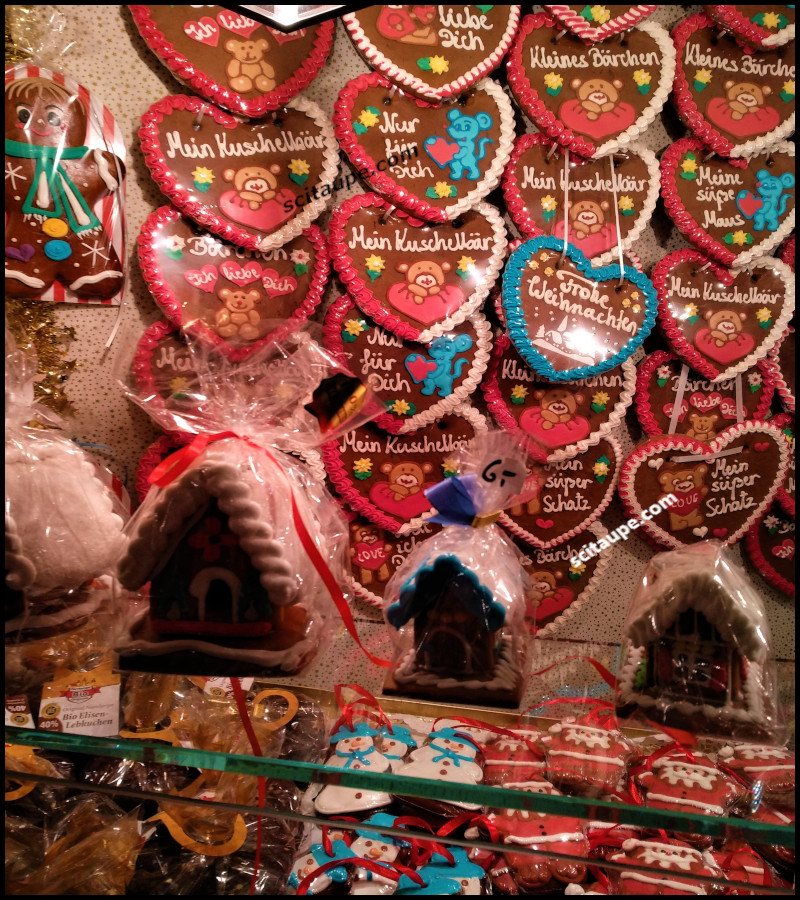
During a recent visit to Nuremberg, I happen to binge on the deliciously spicy “Lebkuchen” or the German gingerbread. Yeah, it just happened and I instantly became a fan. Curiosity took the better of me and I tried to find out how the German Gingerbread evolved. Read on to find more.
What is Lebkuchen?
Lebkuchen or the German Gingerbread is made of flour, ground nuts, almonds or hazel nuts, honey, ginger root and spices of Christmas like cinnamon, nutmeg etc. It is an unmissable participant during German festivities like “Weihnachten” or Christmas, “Ostern” or Easter and “Oktoberfest“. In addition to the above, Lebkuchens also are a mandatory member of the “Bunter Teller” or the Christmas special cookie assortment.
Origins of the German Gingerbread
Nuremberg in Germany is famous for its Gingerbread. It dates back to as old as 14th century in Nuremberg’s history. Old German record books of 1370 have a mention of a “Lebzelter” or a specialized Lebkuchen baker. However, Gingerbread is not a German native.
Crusaders brought Lebkuchen to Germany
European crusaders and travelers brought the Gingerbread to Germany. It also spread through monasteries by monks and nuns who were looking for something that was filling and lasted longer during harsh times. They added spices as preservatives to increase the shelf life.
Nuremberg’s strategic location helped Lebkuchen thrive
Nuremberg’s strategic location along the early trading routes, made it a key trading point. The bakers of Nuremberg had abundant and easy access to the main ingredients viz. flour, spices of Christmas and nuts. The dense woods or “Reichswald” (translating to “Emperor’s Bee Garden”) in and around Nuremberg also helped procure a key ingredient – Honey! Nuremberg, once known for spice trade, soon developed into a gingerbread capital.
Elisenlebkuchen – The German Gingerbread protected by law
Elisenlebkuchen is the finest of the gingerbreads. Nuremberg is famous far and wide for its Lebkuchen. However, no one can produce it beyond Nuremberg because there is a geographical indication for Nuremberg’s Gingerbread which protects it by EU law. All of this ensures and maintains the unique taste and texture of Elisenlebkuchen.
Folklore about the naming of Elisenlebkuchen
According to folklore, the daughter of one of Nuremberg’s master lebzelter fell severely ill. The desperate father baked a luxurious lebkuchen, made only with hazelnuts, honey and spices and named it after his daughter Elisabeth: the Elisenlebkuchen. Today, top notch bakers use up to 10% of flour and over 45% nuts to create a more stable version of the lebkuchen.
Types of Lebkuchen
The German Gingerbread is generally available in multitude of shapes and flavors like chocolate, sugar icing or just plain. It is available in two broad varieties namely “Braune Lebkuchen” and “Oblatenlebkuchen“.
Braune Lebkuchen or Brown Lebkuchen is made with flour, honey and is shaped or pressed into a mold.“Springerle” or “Reiterle” is a braune lebkuchen variant with an embossed design. This delicious treat comes with a thread that can be hung on a Christmas tree and eaten later.
What is Oblaten Lebkuchen?
In olden days, Monks came up with a creative way to keep the Lebkuchen from sticking to utensil while baking. They placed the dough on edible communion wafer used in church. Now, these communion wafers are called Oblate and they are still very much a part of Lebkuchen baking. Oblatenlebkuchen have little or no flour, made primarily from ground nuts or almonds, sugar or honey.
Lebkuchenherzen — for hearty, spicy Christmas wishes
The German name for the heart-shaped lebkuchen is “Lebkuchenherzen“. It has become a staple in German festivities. These are harder than other variants and are decorated with intricate icing motifs or words. Weihnachtsmarkt, Ostermarkt or Oktoberfest market most commonly sell the Lebkuchenherzen with endearing or humorous messages.

Gingerbread cookie man
Hard gingerbread cookies, shaped like animals, kings and queens, were a staple at Medieval fairs in England and few other European countries. Historians believe that during this time Queen Elizabeth of England, designed the famous gingerbread cookie man. Consequently it became the symbol of gingerbread for the rest of the world. However, It would not be wrong to say that the German Gingerbread had influences on the Gingerbread cookie man.

Concluding
Since then whenever I think of Christmas, the one thing that surely pops up in my mind is the German Gingerbread!
5,962 total views, 6 views today




Interesting read
Thank you. Keep visiting our website for more such articles!